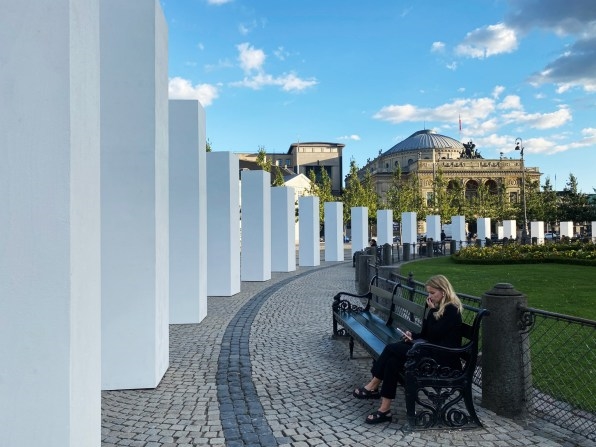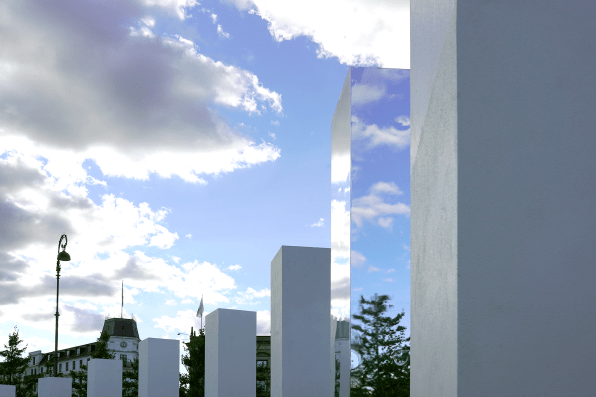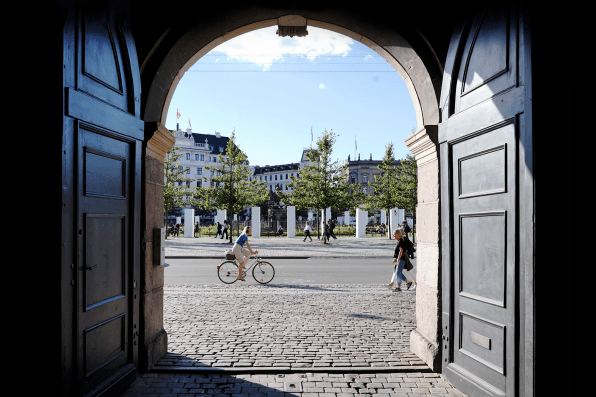Why Copenhagen has just unveiled 50 pedestals without their statues
A strange sight was just unveiled in the largest public square of Copenhagen: 50 pedestals without statues.
The plinths are wrapped around an equestrian statue of 17th-century King Christian V in the heart of Copenhagen’s old town, but each of them represents a significant female figure in Danish history.
Dubbed 50 Queens (in honor of the 50th jubilee of the Queen of Denmark’s accession to the throne), the installation is part of a temporary exhibition and was designed by the youngest female partner at the Danish starchitecture firm Bjarke Ingels Group, or BIG.
Laid out in a gradient, with the tallest one at one end of the oval and the shortest at the other, the pedestals are meant as a platform for a story that’s yet to be told.

The story is that Copenhagen (the capital of the second-most gender-equal country in the world) has more statues of men than of women. There are only 5 statues of women compared to 70 portraying men, and 26 depicting animals, including The Little Mermaid. (A similar disbalance exists in the U.S., where in 2017, only 10% of public outdoor sculptures portrayed women.)
So, Giulia Frittoli, a young architect and partner at BIG, decided to even the scales with a powerful installation in the heart of the city.
“The history of Denmark is dominated by women, and as architects, we need to make our cities more equal and inclusive,” says Frittoli, who partnered with a local, annual festival called Golden Days to realize her vision.
To select the final 50 women, the team gathered a female-dominated jury made up of a former politician, a visual artist, several history professors and researchers, plus the director of the National Gallery of Denmark. The jury selected a wide array of women, including scientists, authors, composers, politicians, and two designers: lighting designer Lise Le Charlotte Klintand and furniture designer Nanna Ditzel.

Notably, though, one woman is missing. While each pedestal has been assigned its own “queen,” the 50th (and tallest) pedestal has been left anonymous in a bid to let the public contribute their own ideas by scanning a QR code. Unlike the other plinths, which are made of wood, this pedestal is clad in mirrors, so “you can see yourself and you can see anyone,” Frittoli says.
In a way, all the pedestals look a little anonymous unless you get close and read the name of the woman on a plaque. But for Frittoli, that is the point.
“We see it as a placeholder,” she says. “It’s a symbol of those statues that are missing.” Empty pedestals are also an opportunity to set the record straight, much like the Black Lives Matter movement sought to end systemic racism by taking down statues of confederate leaders, slave traders, and other supremacists across the U.S. and Europe. “People stood up on those plinths saying history should be rewritten,” Frittoli says. “By removing the statue, the pedestal is there, calling for someone.”

When the exhibition is over, 10 pedestals will travel to institutions like the Copenhagen Central Library or the city’s Botanical Garden, while others will be scattered in yet-to-be-decided spots around the city. For now, the team’s message is made all the more powerful by bringing the pedestals together in one square, encircling the statue of a Danish King sitting proudly on a horse.
The oval shape in which they’re laid out is no accident. For one, it’s reminiscent of a queen’s necklace. But more important, it has no end. “It’s what this exhibition represents,” Frittoli says. “It’s a loop looking at what we can change from the past and the future.”
I can’t help but wonder what would happen if every major city in the world borrowed the concept. For example, who might the 50 American women be?
(36)


